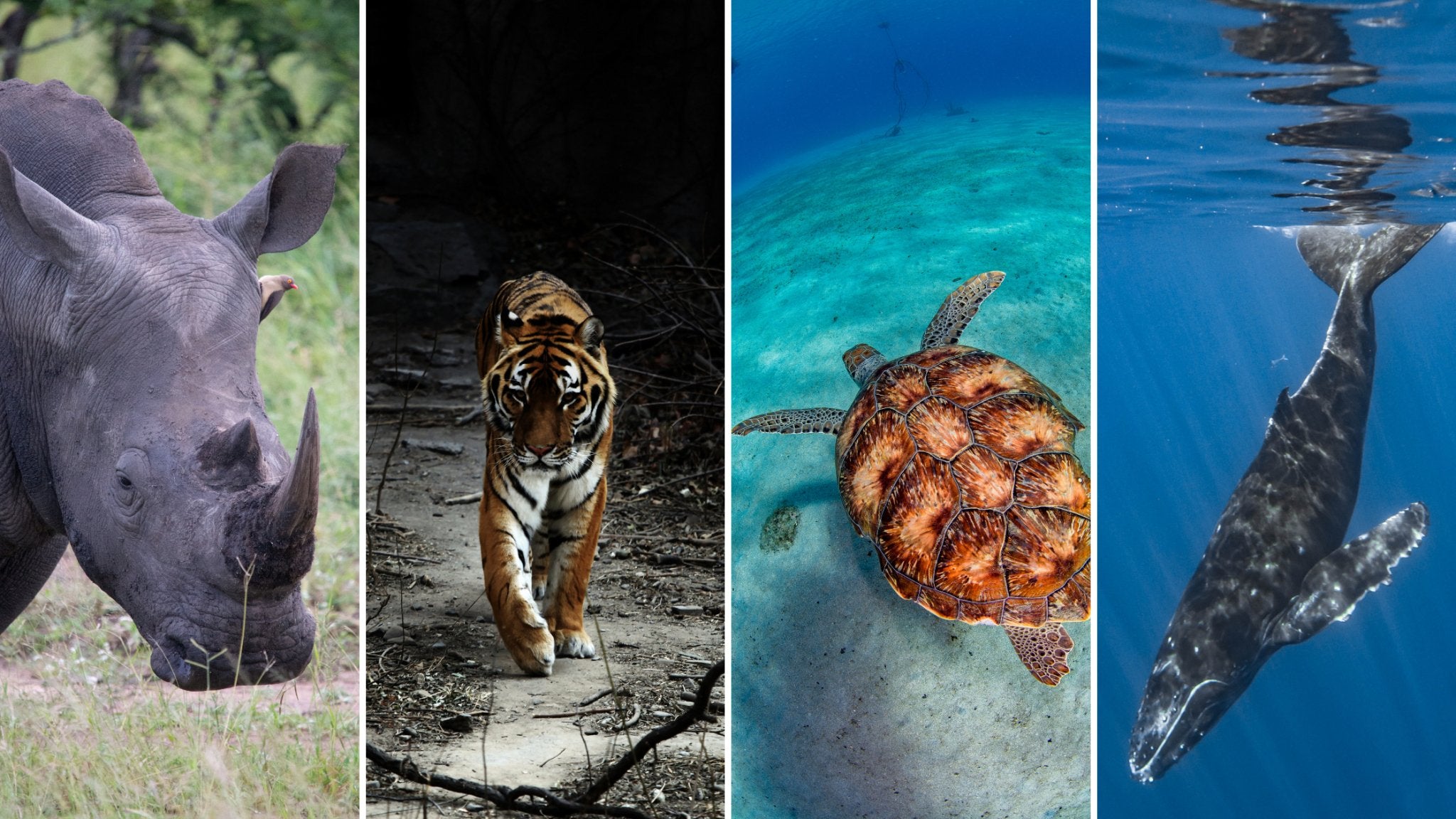National Endangered Species Day is observed every year in the United States on the third Friday in May. Let’s find out more about why this is important!
The first National Endangered Species Day was held on May 19th in 2006. Despite the name, it was a world-wide event.
What Does It Mean To Be An Endangered Species?
Long before the first National Endangered Species Day was ever held, scientists studying animal populations and all the different species started to notice dwindling numbers of some species in the late 1800’s.
By 1973, law makers in Washington DC signed the Endangered Species Act.
They also put together agreements with other countries to help protect intercontinental species, critters like birds and butterflies migrating from one continent to another.

For instance, hummingbirds migrate from the northern parts of the Americas to Central and South America for the winter. Then they will start the journey north again in February.

Monarch butterflies will travel from Mid-California to mountain ranges in Mexico. Mexico now has large areas of land set aside for the butterflies to keep them safe!
How Else Do Countries Help Endangered Species?
Successful protection efforts encouraged other countries to look at their own animal populations and begin to establish some protective laws around animals who were in danger.
Wild life preserves were established, both in the United States and in other countries around the world. These are safe places for the animals to be. They’re in and around the natural habitats for the animals and plants.
And to commemorate the Endangered Species Act, the United States congress declared the 3rd Friday in May to be National Endangered Species Day. It’s been held on that day ever since!
What Are Species Anyway?
Did you know…?
There are more than 100 million different species calling earth home?
These include freshwater and salt water animals…like sea turtles, seahorses, jellyfish, and sharks,
Plant life, both in water and on land…like trees, flowers, seaweed, kelp, and algae,
Insects...like butterflies, honey bees, and mosquitoes,
Reptiles and amphibians...like snakes, frogs, and lizards,
Birds…like ostriches, cardinals, and ducks,
Mammals…like bears, bats, and dolphins,
And People! Hooray!

We have quite the diversity on this planet, huh?
Some Animals Are Extinct
But sadly, there are animals which we’ve never known. (Not including the dinosaurs, because they’ve been extinct for a really long time.)
These animals we can only read about, and see drawings of. Why no pictures? Because they’ve been gone for hundreds, and in a couple cases, thousands of years!

Animals like the Dodo bird. The last sighting of one was recorded in 1662! This was a large, flightless bird which lived on the island of Mauritius in the Indian Ocean.
You’d think of dinosaurs if you heard woolly mammoth. But scientists think that the last of the woolly mammoths survived until 1700 BC. And Sabre-Tooth Cats were around until 11,700 years ago, give or take a few years.
Some Endangered Animals Are Recovering!
There are animals today which are in danger of not existing anymore.
And there are animals which were on the endangered list and, because of efforts to protect them, they’ve been taken off the list!

Bald Eagle
The bald eagle was on the first endangered species list. It was what sparked the creation of the Endangered Species Act.
In 1966 there were plenty of people worried about the bald eagle population in America. It’s our national bird!
There was a pretty big decrease that was happening with the population of this majestic bird. Natural disasters, hunting, and the use of pesticides was causing the population to shrink.
The bald eagle was one of the first animals recognized by the Endangered Species Act. And they’ve made enough of a recovery to be removed from the list!

Tiger
The tiger is the largest member of the cat family.
There was a point in the history of the tiger where they were dwindling to nothing. Then India and Russia and Nepal put some really strict laws in place. It’s illegal to hunt them and to capture them for trade.
With the new laws and people to enforce them, the tigers in these countries are slowly increasing their numbers. There are now 3,900 tigers in the world. They’re still on the endangered species list, though.

Giant Panda
The giant panda is making a come-back.
For quite some time, the only pandas around were in zoos. Conservation efforts and bamboo re-forestation, the primary food of pandas, have let pandas be released back into the wild.
Now there are almost 2,000 pandas living in the wild again! For a long time, the majority of the pandas on the planet lived in captivity!
You can read more about the giant panda here.

Gray Wolf
The Gray Wolves of the U.S. Rocky Mountains are recovering. Placed on the list in the 1970’s due to territorial losses and hunting, the wolves have made a big comeback in their natural habitats.
Louisiana Black Bear
Louisiana Black Bears were on the list in 1992. Their dwindling numbers were also due to loss of habitat. Preserves were created and the bears have come back to about 500-700 in the wild.

Sea Otter
The Sea Otter was placed on the list in 1977. Oil spills, shark attacks, and loss of habitat contributed to their declining numbers. Now there are over 100,000 sea otters across the global waters!
Manatee
Manatees, also called “sea cows,” are big, gentle sea mammals. They were placed on the endangered species list in 1967. They’ve recovered a little. Their numbers aren’t huge, but through conservation efforts, they’re gaining ground!
The creation of wildlife preserves is helping the animals on a big scale.
What Can You Do To Help Endangered Species?
National Endangered Species Day helps by teaching people how they can help in their own back yard or community.
You can plant a garden with flowers to help the pollinators, like bees and bugs and birds. Growing plants and vegetables helps the soil, too.
Other ways to help out is to learn all about the animals, birds, and plants we co-exist with. Visit a zoo or a wildlife preserve close to you. This lets you see the animals in person!
Do some research and find out if there are any endangered species in your area. There are always groups and clubs who work to protect the animals. A lot of the time, they need help. Volunteering is a great way to learn about their efforts and the animals they work with.
Biodiversity Is Important!
We live in a great big world that’s rich in biodiversity. That means that every living thing helps each other out.
The birds and bugs help pollinate the flowers to help them grow and reproduce and make more. Which helps other animals and people, too! And it’s a great big cycle with everything working together.
National Endangered Species Day helps to bring awareness to the big picture. It’s all about understanding the environment they live in and what people can do, and are doing, to help!







